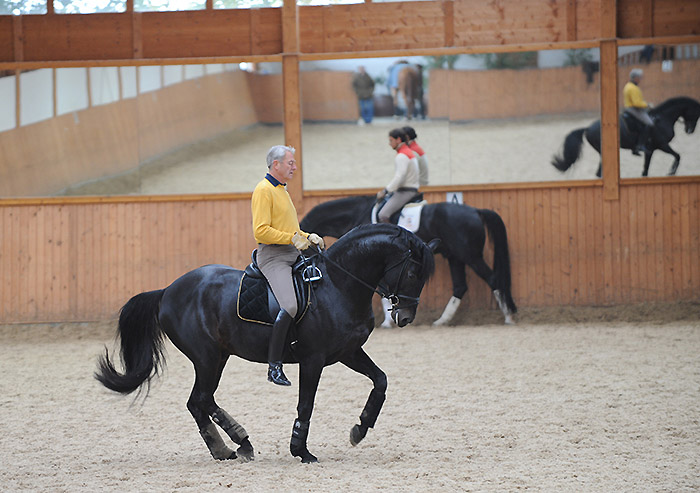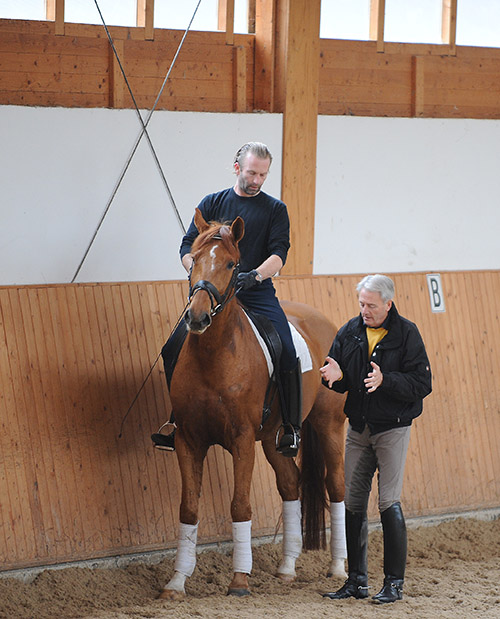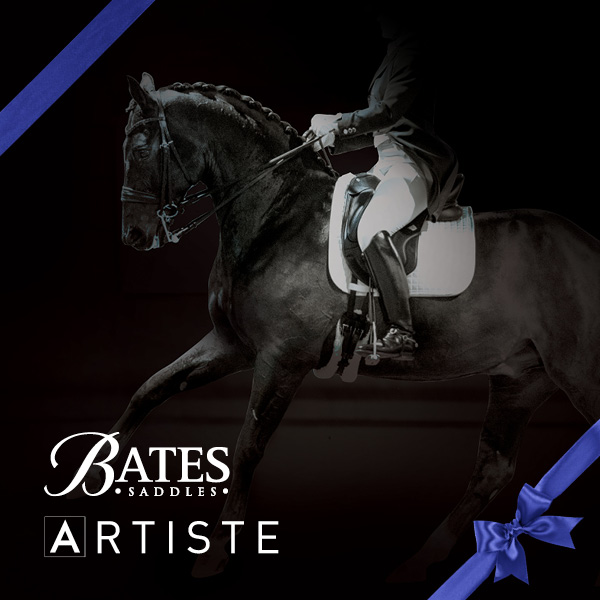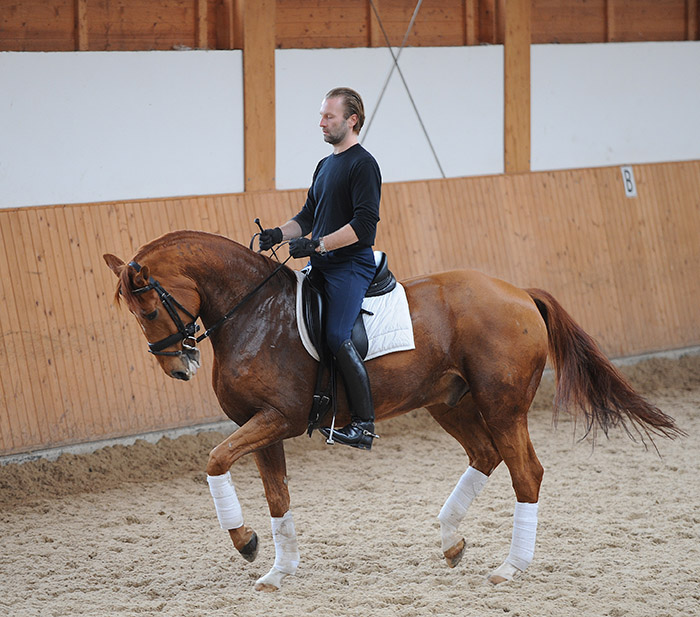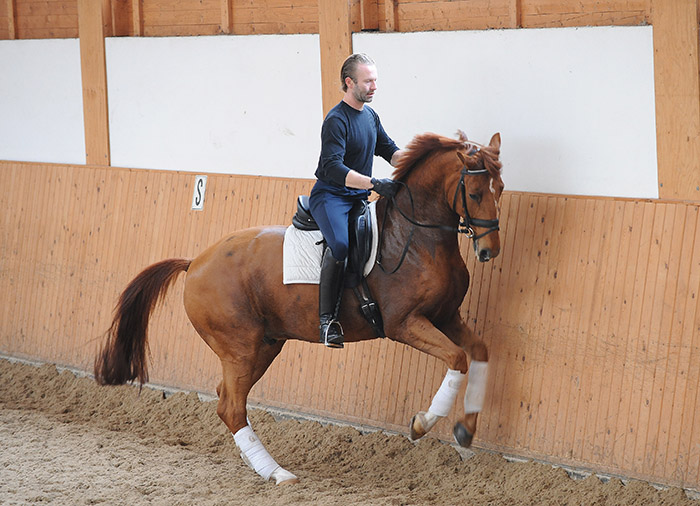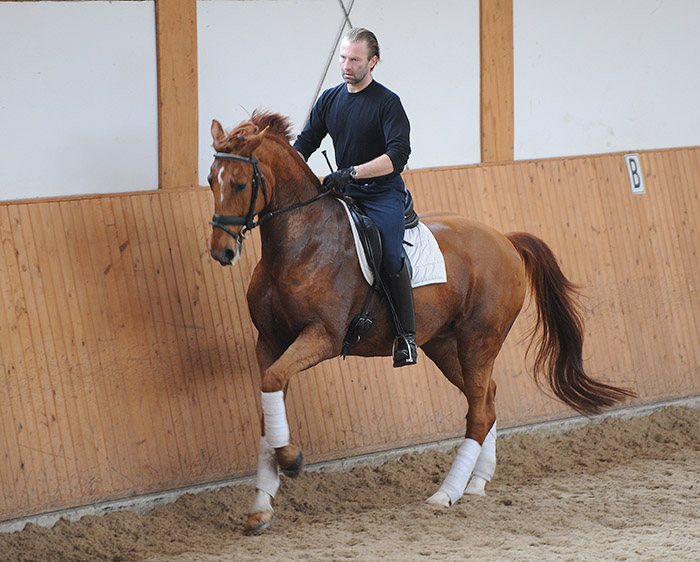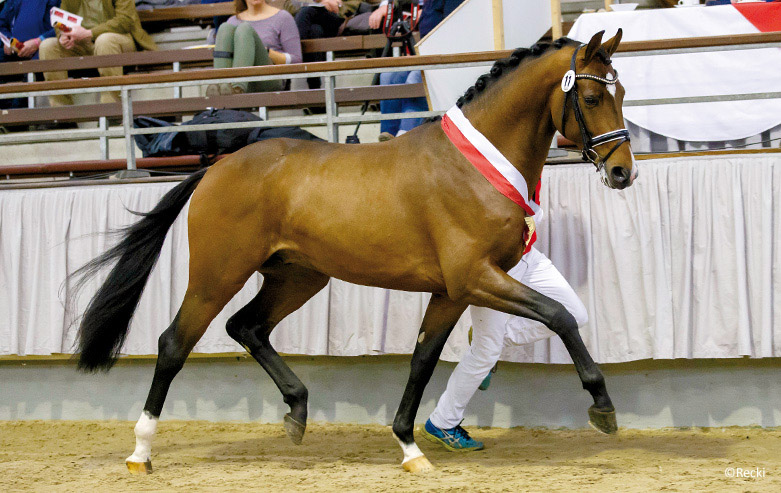The first time, I saw Jean Bemelmans in action – it was at an FEI Freestyle Seminar in Sydney, Jean was working with a rider, and you could really see the transformation happening right in front of your eyes. This is something that is supposed to happen but very rarely does…
Story by Chris Hector & Photos by Roz Neave
Jean has a rare combination of insight, and ability to articulate exactly what he is doing – and his openness, and refreshing candour. Although he was born in Belgium, Jean has spent most of his life in Germany as a dressage rider and trainer.
As he worked his own horse, Jean was simultaneously helping one of his students, the Belgian rider, David Engelen and the Hanoverian, Werthino. David’s problem was a tendency for the horse to be on the forehand and rolled over.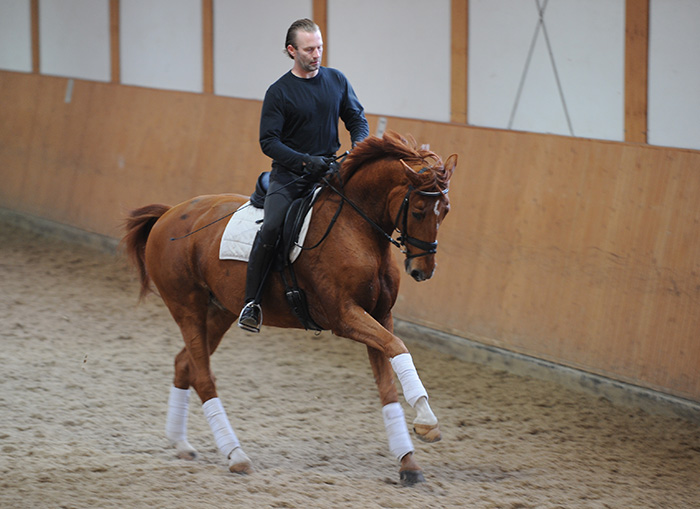
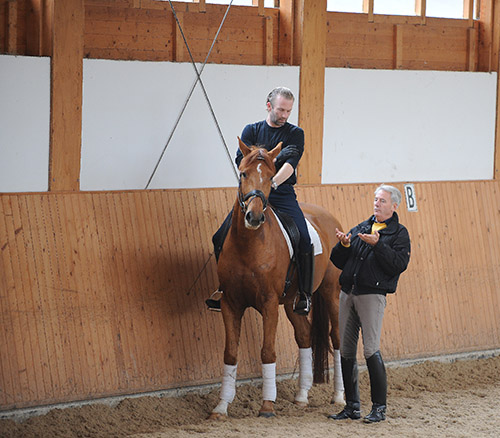 Jean is encouraging David to really shorten Werthino’s canter, and I mean really short – using an interesting exercise with travers in the direction of the long side wall, to get the chestnut back on his haunches.
Jean is encouraging David to really shorten Werthino’s canter, and I mean really short – using an interesting exercise with travers in the direction of the long side wall, to get the chestnut back on his haunches.
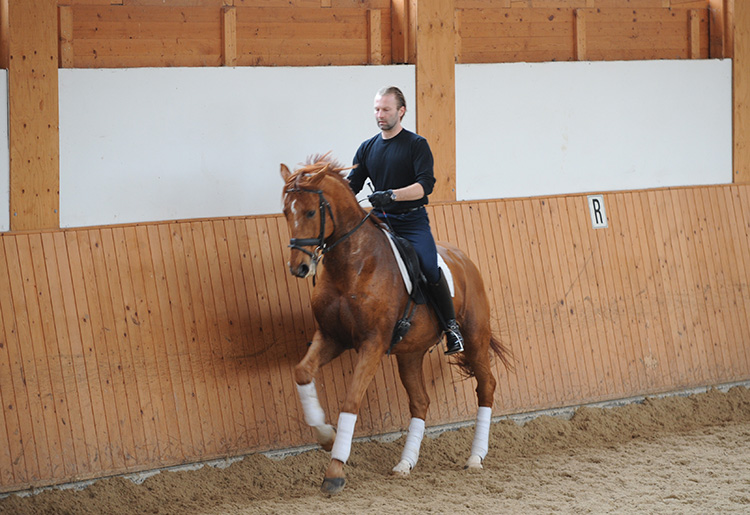
Then David can give the rein away and let the horse stretch, and it doesn’t fall on its forehand.
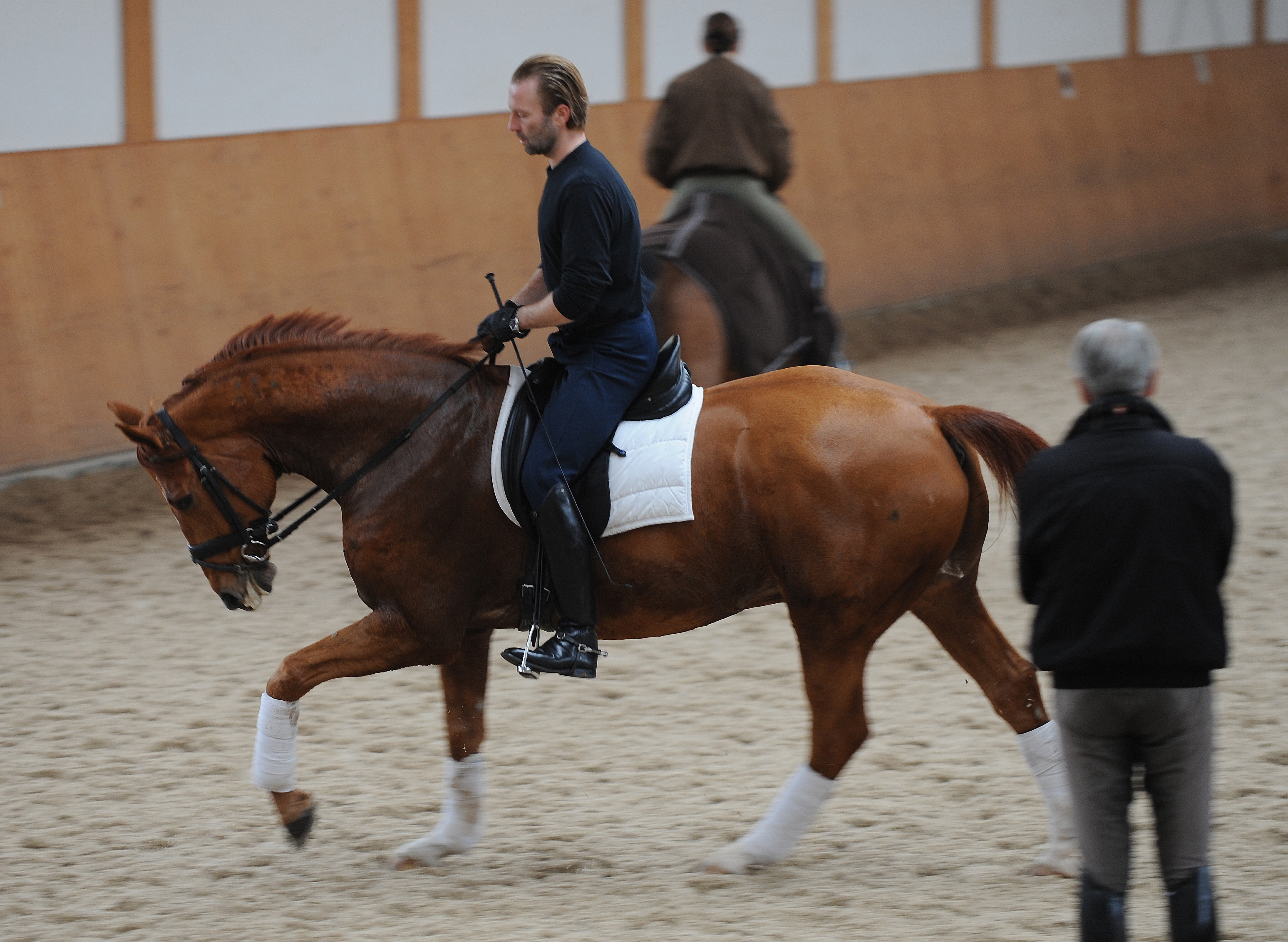
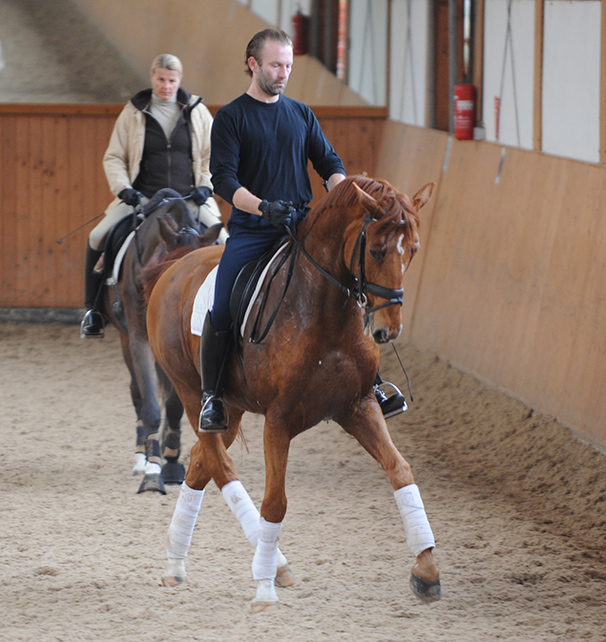
Next we talk more about the combination with Jean
Later I asked Jean about the Belgian combination:
“David Engelen has Werthino back in work after an injury. They did a Grand Prix in Belgium but he has some difficulties with the contact. The horse is a very nice horse, he can do everything but it is always difficult for him to keep the horse in front of him. We are working on this, he has been with me for a month, and we are trying to improve the contact – the test movements he can do very fine.”
But when he started and the horse was so on the forehand, I thought, what is Jean going to do with this horse – but he ended up going really well…
“At the end it was really good, nice moments. David is not very experienced and he has to learn to ride more with his seat, and bring up the wither a little more. If he doesn’t bring the wither up, then he doesn’t get the neck up. First the horse has to come up a little in the wither in front of him, and then the neck will automatically come a little more up. This horse has a quite short neck anyway.”
It was interesting the exercise of the extremely collected canter and right into the corners…
“It is just sometimes if a horse is a little bit flat and on the forehand, and you ride a round corner, this is okay, but it is better if you ride a little bit in the direction of the wall, because the wall makes the horse stop a little, it’s like going up the wall, then when you come out, you have the horse in front of you.”
And you increased that work when you did the travers in canter with the horse’s nose to the wall, and that brought him up even more…
“This brought the horse a little bit better in front of him, otherwise in the arena there is nothing and the horse dives on the shoulder, this way you always have this feeling that you are riding on the wall, up on the wall. At the end for every horse you need a different system, every horse is so so different. If some people come around and say, I am a fan of this particular method, then I always think, these people don’t know what they are talking about. They have to be a fan of their horse, and find the right method for their horse, and then they are on the good way.”
Was it easier to adjust the balance in the canter, and then go to the trot work?
“Yes, because David sits better in the canter, and in the sideways movement you get much better control over the horse, but when he goes forward, then the horse falls too much downwards. Just to keep the horse up there, he gives a half halt, but if the wither is not coming up, he loses him again, so it is always a coming and going and you can’t get out of it. In the end what he has to do is bring the horse on the hindleg, the hindquarters, the horse has to grow, and David has to have the feeling that the body of the horse is in front of him. At the beginning, the horse’s body was behind him, then you try to correct with your hands, but you don’t have this upwards feeling.”
“The problem is contact, we come back to contact. We have to find a way he can be a little bit more steady. He has to correct too much in front, but okay, we work on this, just wait and see. What I think is important as a teacher, is one day you give imput – let’s ride this and this and this – and then maybe the next day, the rider has to find out for himself a little bit. You cannot teach all day long – heels down, hand down, don’t make a robot out of them.”
Looking to breed a top dressage prospect? Like the Escolar son, Escalito? There’s many others to choose from – Go to www.ihb.com.au

